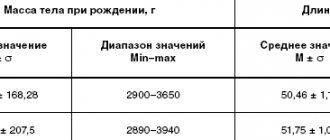Causes of green diarrhea
Loose stools with green stool can be caused by many reasons. The most common are the following.
| Intestinal infection. | Diseases such as rotavirus enteritis, dysentery, amoebiasis and many others are caused by pathogens that enter the digestive system along with food and water, through unwashed hands or sharing dishes and personal items between healthy and sick people. |
| Food poisoning. | Improper storage of prepared dishes, low-quality or expired products, their incorrect or insufficient heat treatment and other circumstances can lead to bacteria multiplying in food, often causing gastrointestinal disorders. |
| Chronic and acute pathologies. | Diseases of the digestive organs and hepatobiliary system can cause stool to turn dark green to marsh color and cause bowel problems. |
| Food allergies. | Allergies caused by the consumption of allergenic foods are characterized by diarrhea, among other symptoms. Depending on the chemical composition of such a product, feces may acquire an unnatural color, including greenish. |
| Other reasons. | Among the physiological causes of dark green diarrhea, the most likely is the consumption of large amounts of fresh vegetables and fruits, which simultaneously increase intestinal motility and dilute stool. Also, while taking certain medications, feces with greens are a common occurrence that goes away after discontinuation of the drug. |
Causes of changes in stool color in adults
Green stool is not always a symptom of a disease
Normally, the color of a person's stool should be brown. But by coincidence, under the influence of certain factors, it can change its color. The most harmless reasons for changing the color of stool include eating large amounts of dyes. Dyes are added everywhere, but most often people who love candies, lemonades (tarragon, etc.) are faced with the problem of green feces. Also, taking dietary supplements can also lead to a change in the color of stool to green.
And if these reasons can be classified as relatively harmless, then there are a number of other reasons when green stool can indicate a developing disease that requires immediate treatment:
- Dysbacteriosis. One of the most common problems for many people is dysbiosis. This is a violation of the intestinal microflora, and one where there are practically no beneficial bacteria. And because of this, the body reacts in a unique way and begins to behave differently. Namely, the feces become green in color, with an unpleasant odor and the presence of mucus. This disease is provoked by taking antibiotics, which completely kill the intestinal microflora, and to help populate it with beneficial bacteria, it is necessary to take special medications, which almost everyone forgets. To accurately confirm the presence of dysbacteriosis, it is necessary to undergo a detailed stool test to determine the presence of beneficial and harmful bacteria in it.
- Intestinal inflammation. With this disease, the stool not only becomes green, but also contains mucus and pus. In this case, due to the breakdown of leukocytes, such staining is obtained. With acute inflammation of the intestines, a person suffers from pain, and in order to somehow relieve them, it is necessary to abstain from eating for some time, since the foods eaten will irritate them even more. And to replenish the alkaline balance you need to drink Regidron. To remove toxins, it is better to use Smecta, it is an excellent absorbent
- Bleeding in the intestines. Sometimes, when bleeding occurs in the intestines, the color of the stool takes on a greenish tint. This occurs due to iron oxidation
- Exacerbation of stomach or duodenal ulcers
- An intestinal infection that will manifest itself not only as green stool, but also vomiting, fever, and diarrhea. Moreover, the feces will be mixed with mucus, pus, and often blood
- Food poisoning. Adults often do not look at the expiration dates of products and consume them. And sometimes, because it’s simply a shame to throw away soup that has been sitting in the refrigerator for a long time, they take it and finish it. And as a result, they get food poisoning, the symptoms of which are very similar to an intestinal infection, with the exception of one point: with food poisoning, the body temperature rises very rarely
- Liver problems, especially if they are associated with excessive breakdown of red blood cells and the production of large amounts of bilirubin
If the stool does not change color for several days and remains green, then it is best to consult a doctor for advice.
Associated symptoms
| Flatulence. | Pain. | Increased body temperature. | Nausea. |
| This is one of the common symptoms associated with diarrhea. Increased gas formation in the intestines is often accompanied by bloating and intestinal colic, which is relieved or disappears temporarily after the gases pass. | It can be dull and aching, acute and paroxysmal, localized in the upper abdomen or spread along the anterior abdominal wall and radiate to the sides and lower back. | This symptom usually accompanies diarrhea of infectious origin, and can also occur in acute inflammatory diseases of the stomach and intestines. | It can be of varying intensity: from mild to severe, passing only after several episodes of vomiting. |
Each of the listed symptoms is important, so when contacting a doctor, it is important to talk about each of these signs, when it began to appear, how severe, etc. This will allow the doctor to get an overall picture of the disease and make it easier to make a diagnosis.
Why is diarrhea dangerous?
Diarrhea left without appropriate treatment can lead to serious complications for the body as a whole. The most dangerous of them are the following.
Dehydration
. With diarrhea, the mechanism of water absorption by the intestinal walls is disrupted. Liquid is removed from the body without having time to take part in metabolism. In addition, water is released into the intestinal lumen, which increases fluid loss. It is especially dangerous if a child in the first 2–3 years of life or an adult recovering from a serious illness develops dehydration. It can be dangerous not only to health, but also to life.
Imbalance of electrolytes in the body
. Together with water, the body loses salts, without which the proper functioning of cells, the penetration of necessary substances through their membranes and the removal of products of cellular metabolism are impossible. As a result, this can lead to disruption of vital organs.
Exhaustion
. With diarrhea, especially if it continues for a long time, a deficiency of nutrients, vitamins, minerals and other biologically significant elements often develops. This leads to chronic loss of strength, loss of body weight, and internal organs suffer due to a lack of the substances they need, which affects their functions.
The occurrence of anal fissures
. Constant irritation of the anal area during diarrhea leads to irritation of the rectal mucosa and the skin around the anus. Long-term diarrhea often causes the formation of anal fissures and accompanying symptoms: acute pain and bleeding.
Green feces in children
If an unpleasant odor is associated with the green color, then you should be wary
Parents are always worried when their child's stool changes color. In the first few weeks after birth, the color of your baby's stool may change constantly, ranging from yellow to green. This is considered quite normal, as the intestines gradually adapt to the new environment. Sometimes children have greenish stool when teething. Doctors attribute this to the fact that at the moment when teeth are being cut, more saliva is produced, and this in turn provokes the production of more bile, which colors the stool a different color and causes colic.
When complementary foods are introduced, the color of the baby's stool may also change and become green, especially when vegetable purees are introduced (broccoli, cauliflower, etc.). In these cases, you should not panic and run immediately to the pediatrician or call an ambulance. But if green stool in a child is accompanied by fever, abdominal pain, and vomiting, then you should immediately call an ambulance, as this could be an intestinal infection, which is very dangerous. With an intestinal infection, green stool will contain mucus and bloody streaks.
In any case, you cannot ignore the change in color of your baby’s stool. It’s just that if he behaves the same way as always and nothing bothers him, then you should just watch him. It is quite possible that this is a reaction to a new product.
Treatment
To treat diarrhea, it is important to determine the cause of the diarrhea, evaluate your overall health, and determine whether the diarrhea has led to serious complications. Therefore, if you have green diarrhea, you need to consult a doctor who will conduct an examination, collect anamnesis and prescribe a diagnosis. Treatment is recommended based on the findings. It may include taking a variety of medications, which may include:
- antibacterial drugs - prescribed for the treatment of diarrhea of bacterial origin;
- antidiarrheal agents - allow you to normalize intestinal motor function, reduce fluid loss and restore the rhythm of intestinal function;
- anti-inflammatory drugs - help relieve inflammation of the intestinal walls;
- enterosorbents - absorb toxins and remove gases.
Treatment of diarrhea is carried out comprehensively: both the underlying disease or condition that caused this symptom and the consequences of diarrhea (decrease in electrolyte levels, etc.) are eliminated.
What to do if stool color changes
If the child behaves in a normal way, then green feces may simply be a “temporary phenomenon.”
If an adult’s stool has acquired a greenish tint, but is not bothered by abdominal pain, nausea, vomiting, etc., then you can observe the condition for a couple of days. And most likely everything will return to normal. If the stool has changed color and also become liquid, then it is best to drink Smecta or Loperamide in order, firstly, to stop the diarrhea, and secondly, to remove toxins from the body. But if fever and vomiting are added to all this, then it is best to call an ambulance, as this could be an intestinal infection.
Greenish-colored stool can be either a symptom of an incipient disease or a temporary phenomenon. The main thing is to establish the exact cause of such a change, and, if necessary, begin to take measures to restore it.
IMODIUM® Express in the fight against diarrhea
IMODIUM® Express is a drug that is approved for use in the symptomatic treatment of acute and chronic diarrhea of various origins. The active substance, loperamide, has the following effects:
- helps restore intestinal motor function - slows down the movement of feces and reduces the frequency of the urge to defecate;
- helps reduce the volume of water released into the intestinal lumen;
- helps regulate and restore the normal level of absorption of water and salts dissolved in it by the intestinal walls.
Before taking IMODIUM® Express, you should read the instructions and consult a specialist.











